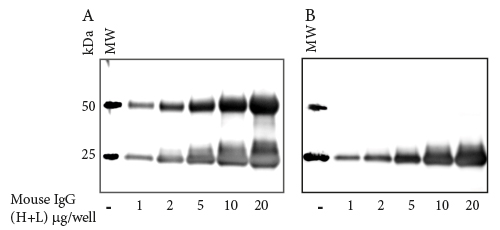

Go back to the original non-passaged cell line and run these samples in parallel. Nitrocellulose membranes are considered to give less background than PVDF.Ĭare should be taken to prevent the membrane from drying out during incubation.Ĭell lines that have been frequently passaged gradually accumulate differences in their protein expression profiles

Your choice of membrane may give high background The washing of unbound antibodies may be insufficient In this case, use BSA as a blocking reagent instead of milk. Run a secondary control without the primary antibody.Ĭross-reactivity between the blocking agent and primary or secondary antibodyĪdd a mild detergent such as Tween 20 to the incubation and washing buffer.įor phospho-specific antibodies: milk contains casein which is a phosphoprotein the phospho-specific antibody can detect casein present in the milk causing high background. The secondary antibody may be binding non-specifically or reacting with the blocking reagent The incubation temperature may be too high Incubate for longer but in more dilute antibody (a slow but targeted binding is best). Titrate the antibody to the optimal concentration. The primary antibody concentration may be too high These can be included in the antibody buffers as well. Increase the blocking incubation period and consider changing the blocking agent, we recommend 3–5% non-fat dry milk, BSA, or normal serum for 1 h at room temperature. The detection kit is old and the substrate is inactiveīlocking of non-specific binding might be absent or insufficient The secondary antibody is inhibited by sodium azideĭo not use sodium azide together with HRP-conjugated antibodies. Use fresh antibody as the effective concentration is lowered upon each use. Reduce the number or duration of washing steps. If using PVDF membrane, make sure that you pre-soak the membrane in methanol and then in transfer buffer. If proteins have not transferred effectively, check the transfer was not performed in the wrong direction. There is a poor transfer of protein to membraneĬheck the transfer with a reversible stain such as Ponceau S. Use an enrichment step to maximize the signal (eg prepare nuclear lysates for a nuclear protein). The protein of interest is not abundantly present in the tissue Load at least 20–30 μg protein per lane, use protease inhibitors and run the recommended positive control. The primary antibody does not recognize the protein in the species being testedĬheck the datasheet or perform a BLASTp alignment to see whether your antibody should react with the target protein. Use a mild detergent such as Tween 20 or switch blocking reagent (ie commonly used blocking reagents are milk, BSA, serum or gelatin). There is cross-reactivity between the blocking agent and the primary or secondary antibody Use a higher concentration of antibody or incubate longer (eg overnight) at 4☌. Not enough primary or secondary antibody is bound to the protein of interest Use a secondary antibody that was raised against the species in which the primary was raised (eg if the primary is raised in rabbit, use an anti-rabbit secondary). The primary antibody and the secondary antibody are not compatible Solve your western blot problems with these troubleshooting tips, covering common causes of no signal, high background, multiple bands, and more.


 0 kommentar(er)
0 kommentar(er)
